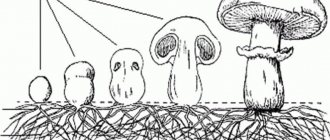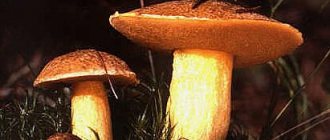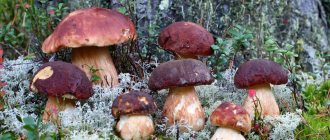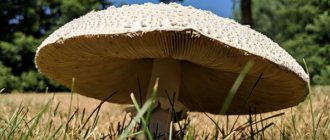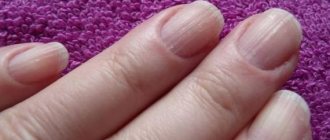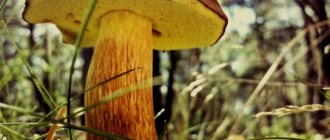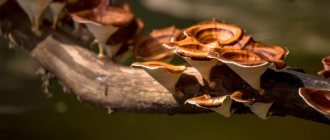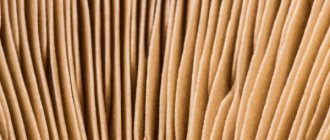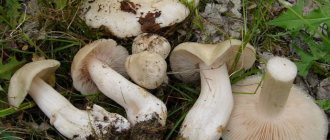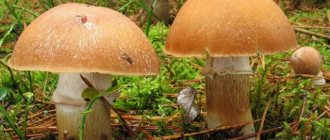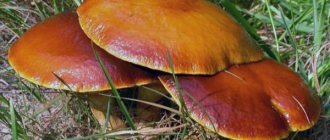Mushrooms
0
1656
Article rating
Kira Stoletova
The nutrition of fungi is heterotrophic. This is a complex process that combines mechanisms characteristic of animals and plants. It is unique; these organisms represent a separate kingdom with its own characteristics. Some species get everything they need from a dead substrate, while others parasitize living creatures.
Features of mushroom nutrition
Eating methods
In nature, there are 2 main methods of nutrition - heterotrophic and autotrophic. What is their difference? All animals, many bacteria and fungi are heterotrophs. These organisms are not capable of synthesizing organic substances from inorganic ones. They must receive the necessary connections from the external environment.
Autotrophs are plants and some bacteria. Their cells contain special green plastids - chloroplasts. They contain a green substance - chlorophyll. It catalyzes a reaction after which carbon dioxide, nitrogen and water, under the influence of light energy, are able to transform into complex organic compounds.
Thus, plants provide themselves with the building and energy materials from which they grow. From the external environment they receive only water, oxygen and minerals.
Fungi are called heterotrophs; they are not capable of independently synthesizing organic substances from inorganic ones. In this they are similar to animals. The second point that brings this kingdom closer to fauna is the ability to secrete enzymes to break down complex compounds. Only in animals this process takes place inside the body, and in fungi - in the external environment.
These organisms also have something in common with the plant kingdom. They are brought together by the way they absorb nutrients. It passes by absorption from the substrate through the cell wall. In the highest representatives of the kingdom, this occurs through a special organ - the mycelium. But they do not have chlorophyll, which means photosynthesis is impossible.
Features and food items
Fungi are heterotrophs, which is why they differ from the plant world. Diets can be called very diverse. There are several sources:
- Use of organic substances.
- Use of minerals in food.
Good food is an abundance of plant remains, animal carcasses, rotting roots or forest litter. Recycling a dead plant requires the help of a forest representative, as its properties help to destroy the layers of cellulose casing.
Nutrition is characterized by the following qualities:
- Individuals are not capable of processing large food.
- The image of digestion can be called external.
- The abundance of carbon is the main source of energy.
- The absorption of the necessary substances is carried out by basic methods.
Forest individuals will not eat large pieces of food, since they cannot process them. A characteristic feature is the presence of an external type of digestion. The body is able to secrete a special enzyme that breaks down complex organic matter. Hydrolysis and the corresponding process helps him in this.
Carbon is not only a source of necessary energy, but also an integral part of the structure of cells. About half of the sugar that is processed is part of the structure of organisms that feed through the whole body. The environment contains a certain amount of different substances and compounds. Mushrooms absorb, absorb and process them. As a result of vigorous activity, humus is formed - a fertile layer of soil.
Nutrition method
For the normal functioning of any living organism, proteins (proteins), carbohydrates and fats (lipids) are necessary. Proteins are synthesized in cells from amino acids supplied to heterotrophs from the external environment. Fats are part of cell walls and become an energy reserve in case of carbohydrate deficiency. Complex carbohydrates are obtained from glucose and are energy sources. Plants synthesize complex carbohydrates from simple carbohydrates - starch and fiber. In animals they turn into glycogen, here fungi are completely similar to fauna, glycogen is also present in their body.
To obtain all these substances from the external environment, they must first decompose more complex compounds into simpler ones. After all, neither peptides, nor starch, nor fiber enter the cell. To do this, organisms release enzymes into the external environment. Some representatives of the kingdom, for example, yeast, do not have enzymes. Therefore, they live on a specific substrate of simple carbohydrates, which penetrates the cell walls.
Complex multicellular higher fungi synthesize enzymes in the mycelium, and some species also in fruiting bodies. Each variety has its own characteristics. Some produce enzymes that can dissolve a large number of substances. Others have only specific ones, for example, breaking down only keratin. This determines what medium they will grow on.
The body of multicellular species consists of special threads - hyphae. It is through their cells that nutrients are absorbed. Protein synthesis, the conversion of glucose into glycogen, and simple lipids into complex fats occur here. Hyphae are attached to the substrate. Depending on what environment and method of nutrition mushrooms choose, they are divided into:
- saprophytes or saprotrophs;
- parasites;
- symbiotics or symbionts.
Most representatives of the kingdom are saprophytes that settle on decaying remains. But there are thousands of parasitic species. Some have chosen a special way of interacting with other organisms - mutually beneficial symbiosis. Such mushrooms do not feed only at the expense of another organism, but help it obtain chemical elements from the external environment. This is their main difference from parasites.
The structure of mushrooms
Structure of mushrooms
Kingdom Mushrooms are conventionally divided into lower and higher. The basis of the vegetative body of mushrooms is the mycelium, or mycelium. The mycelium consists of thin threads, or hyphae, similar to fluff. These threads are located inside the substrate on which the fungus lives.
Most often, the mycelium occupies a large surface. Nutrients are absorbed osmotically through the mycelium The mycelium of lower fungi is either divided into cells or there are no intercellular partitions.
Mono- or multinucleated fungal cells are in most cases covered with a thin cell membrane. Underneath it is a cytoplasmic membrane that envelops the cytoplasm.
The fungal cell contains enzymes, proteins and organelles (lysosomes) in which proteins are broken down by proteolytic enzymes. Mitochondria are similar to those of higher plants. Vacuoles contain reserve nutrients: glycogen, lipids, fatty acids, fats, etc.
Edible mushrooms contain many vitamins and mineral salts. Approximately 50% of the dry mass of mushrooms is nitrogenous substances, of which proteins account for about 30%.
Saprophytic mushrooms
Molds settle on any surface
The methods of feeding saprophyte mushrooms are classical. According to many scientists, they are primary in relation to any other type characteristic of the majority of representatives of this kingdom. Such organisms settle on a certain dead substrate - soil, tree stumps, half-decomposed fruits, products, animal corpses. Hyphae penetrate this substrate, begin to secrete enzymes and absorb nutrients.
Saprotrophs play an important role in nature. Fungi feed on dead organisms and decompose them. This releases ash elements that are available for absorption by plants. From simple minerals, autotrophs synthesize complex organic matter, which is necessary for heterotrophs to maintain the life cycle of all living things.
Most saprophytes live in the soil. They are microscopic and macroscopic. In the group of macroscopic saprophytes, the most common representatives are cap and mold saprophytes. Everyone knows the cap species; they grow in forests and meadows, and can be edible or inedible. They live on old wood and take part in the decomposition of fallen pine needles and leaves. They feed on decay products of organic matter.
Mold species take up residence in any environment, including household products. It is also dead matter that becomes their nutrient substrate. This is one of the largest groups that inhabits all corners of the planet. Mold fungi feed by decomposing coarse organic matter into simpler ones, then bacteria join the process.
Parasitic mushrooms
The parasitic lifestyle and feeding of fungi is secondary, but quite common. During evolution, some species chose environments in which they had fewer competitors. They live on living organisms and feed on the products of their vital activity or use the bodies of the host organisms themselves as food. For example, they kill part of the tissue with the help of enzymes, then use the resulting semi-decomposed substances.
All varieties of this group are conventionally divided into:
- Plant pests (ergot, late blight, gray rot).
- Pests of invertebrate animals (parasitic on ants, bees, crustaceans).
- Vertebrate pests (parasitic on amphibians, reptiles, birds, mammals)
- Human parasites (most often yeast of the genus Candida).
Many parasites are strictly specific, affecting only one type of plant or animal. In addition to them, the group of parasites also includes those that have a wider range of hosts. If the fungus does not live outside the body of another and this is its only way of feeding, then it is called an obligate parasite. It is characterized by a simple structure, often single-celled creatures. For example, the common causative agent of thrush, Candida, is a single-celled yeast fungus.
There are saprophytes that at certain moments are capable of switching to a parasitic lifestyle and becoming a kind of predators. They belong to the facultative type of parasites that infect weakened animals and plants. For example, common mold colonizes still living leaves in a humid environment. Aspergillosis, a dangerous fungal disease of humans, develops only in people with weakened immune systems. Although these mushrooms are widespread in nature and even live in the human body without causing harm to it.
There is another way of incomplete parasitism. Fungi feed on organic matter and live in the body, unnoticeably to the host. When a plant or animal dies, fungi begin to multiply by feeding on necrotic tissue. This is a natural mechanism that helps to quickly decompose the corpses of living organisms.
Symbiosis
This method of interaction is quite widespread in nature, although it is very specific. The two organisms use each other's features and mutually benefit. Cap species often enter into symbiosis with trees in the forest. Their mycelium envelops the roots of the plant and penetrates the cells. Its area reaches 1-6 km² and even more.
The hyphae absorb minerals and share them with the tree. Thus, almost the entire periodic table comes to him. The suction surface of the roots increases, which stimulates the growth of oak, birch, aspen or other species. Some trees cannot even exist without their helpers; the villi of their roots atrophy.
The fungus receives organic substances from the tree in large doses, which it synthesizes in the light through photosynthesis. Often these compounds enter the mycelium in a simple form accessible to cells.
Irina Selyutina (Biologist):
The mutually beneficial cooperation between a fungus and a plant is called mycorrhiza or fungal root. This term was introduced into biology in 1885 by the German biologist A.B. Frank.
The following types of mycorrhiza are distinguished:
- Ectomycorrhiza: fungal hyphae entwine the root, forming a sheath, but do not penetrate the root cells, but only into the intercellular spaces.
- Endomycorrhiza: fungal hyphae penetrate into root cells through pores in the cell membranes and can form clusters there that resemble tangles. Hyphae within the cell can branch; these branches are called arbuscules.
- Ectoendomycorrhiza: represents an intermediate option between the previous ones.
As a result of these normalized mycorrhizal relationships, species are more likely to survive natural competition.
Lichens
The symbiosis of fungi and algae gave rise to a special type of organisms - lichens, which belong to the kingdom Mushrooms. They are sometimes mistakenly called autotrophic fungi. But as part of lichens, the fungus continues to feed heterotrophically.
Irina Selyutina (Biologist):
The body of lichens is called slang and consists of fungal hyphae and unicellular algae. The algal component is also called a phycobiont; it can be represented by cyanobacteria, green or yellow-green algae. The fungal component is a mycobiont, usually represented by marsupial and basidiomycetes. In this original organism, the fungus supplies the algae with water and minerals, and the algae, in turn, synthesize organic compounds. Despite the seemingly mutually beneficial union of two representatives of different kingdoms, they talk about such a phenomenon as obligate parasitism on the part of the fungus, because if this relationship is destroyed, the algae will survive in an independent life, but the mushroom will die.
The photosynthesis component in this tandem is carried out by algae, which receive minerals from their “partner”. Fungal hyphae attach to the substrate (soil, tree bark) and absorb water and ash elements from there and transfer them to algae. They produce organic matter from carbon, hydrogen and nitrogen, which the fungi then use.
Mushrooms
Fungi are a kingdom of eukaryotic unicellular and multicellular heterotrophic organisms that have a number of common features with plants and animals, but also a number of features that distinguish them from the mentioned kingdoms. According to the method of nutrition, mushrooms can be saprotrophs and parasites.
The structure of mushrooms
The key feature of a fungal cell is the presence of a cell wall made of chitin. The reserve nutrient, like in animals, is glycogen. In food chains, fungi occupy the position of decomposers, destroying organic matter of dead animals and plants. Fungi are not capable of photosynthesis (they lack plastids - chloroplasts), are immobile, and breathe oxygen.
Some mushrooms form fruiting bodies, commonly called mushrooms. The fruiting body serves to produce spores during the sexual process.
The body of the fungus consists of threads - hyphae, which are repeatedly intertwined with each other, resulting in the formation of mycelium (Greek mykes - mushroom), or mycelium. Fungal hyphae grow in a nutrient medium, on a substrate, and are the vegetative organs of the fungus.
The growth of the fungus is not limited by anything, only by the size of the substrate itself. Thus, if we imagine a loaf of bread the size of the globe and favorable conditions, then the mold, mucor, would occupy all this space until the substrate runs out.
Fungal hyphae, intertwining with plant roots, form mycorrhiza (Greek mykes - mushroom + rhiza - root), or fungal root. This is a special form of relationship between species - symbiosis (more precisely, mutualism), in which both organisms mutually benefit from the relationship.
The hyphae of the fungus increase the area of absorption of water from the soil for the plant: the fungus shares water with its green friend)) And the plant, in the process of photosynthesis, creates organic matter, which it shares with the fungus, which turns out to be very useful for it.
Similarities between mushrooms and animals
The similarities between mushrooms and animals are as follows:
- Nutrition method
- Metabolic product
- Chitin
- Spare nutrient
- Plastids
Both animals and fungi are characterized by a heterotrophic type of nutrition - the absorption of ready-made organic substances.
As in animals, the end product of metabolism in fungi is urea.
The cell wall of fungi includes the same biopolymer (polysaccharide) - chitin, which forms the exoskeleton of arthropods.
The reserve nutrient of fungi and animals is glycogen.
In the cells of fungi, like animals, there are no plastids: chloroplasts, leucoplasts, chromoplasts - they are found only in plant cells.
Higher and lower mushrooms
All mushrooms are divided into higher and lower. This division is based on the structure of the mycelium: in lower fungi, the mycelium does not have partitions (non-cellular), and hyphae may be absent. These include mucor, late blight, and ringworm.
Higher mushrooms have mycelium separated by partitions (septa) and can form fruiting bodies. Higher fungi include penicillium, yeast, ergot, and cap mushrooms.
Mushroom propagation
Vegetative, asexual and sexual reproduction is possible. Vegetative action is carried out by dividing the mycelium into separate parts: from each part a mushroom subsequently grows.
Asexual reproduction occurs through sporulation. Spores are formed at the ends of hyphae or in sporangia (on conidiophores). Conidiophores are the branched terminal sections of hyphae. The spore, once in a favorable environment, grows and gives rise to a new mycelium of the fungus.
Sexual reproduction involves the formation of sperm in antheridia and eggs in oogonia. After the formation of a zygote (2n), in many fungi, zygotic reduction immediately occurs - the zygote divides by meiosis, the resulting cells have a haploid (n) set of chromosomes.
In marsupial fungi, special bags (asci) develop in the fruiting bodies, in which haploid spores are formed. They grow into mycelium, on which spermatozoa (n) are formed from antheridia, and eggs (n) from ovognia. When they merge, a zygote (2n) is formed, which is divided three times by meiosis into 8 ascospores (n).
Basidiomycetes (fly agaric, russula, red boletus, boletus, champignon, honey fungus, camelina, chanterelle) do not have bags. Reproduction occurs with the help of basidiospores, which develop openly on the basidia. They experience somatogamy - the fusion of 2 cells of vegetative mycelium.
We especially note yeasts that are capable of budding. When budding, a thickening appears on the cell, which gradually grows and turns into a full-fledged daughter individual.
Fungi parasites and pathogens
About 30-40% of fungi are parasites and pathogens of plants and animals. Diseases caused by fungi are called mycoses.
Among the causative agents of diseases of cultivated plants, the following should be noted:
- Ergot of rye
- Smut mushrooms
- Bread (linear) rust
- Powdery mildew
- Late blight
Parasitizes cereal plants. When a plant is damaged, in place of the fruits (kernels), black formations grow - sclerotia, which in their structure are intertwined hyphae of the fungus. Ergot can infect new plants if its spores reach the ovary of the pistil.
Sclerotia contain toxic substances that, if they get into flour, can lead to serious poisoning of a person, including death.
These fungi can cause diseases of wheat, corn, and rye. Externally, the disease manifests itself as black, seemingly charred spikelets, which are actually filled with black fungal spores.
In the development cycle of this parasite there are two hosts: “spring” - barberry, “summer” - wheat and other cereals. Spores of a characteristic red-rusty color are formed in the amount of several generations in one summer.
These spores cover the leaves and stems and have a rust-like appearance. By winter, the spores darken and turn black; after overwintering, the cycle repeats again.
The fungus penetrates plant cells and feeds on their contents, leading to the death of the plant. Outwardly it appears as white fluff on leaves and tubers (potatoes). Over time it darkens due to the destruction of plant cells.
Powdery mildew significantly reduces the yield of potatoes, tomatoes and other cultivated plants.
Phytophthora belongs to the lower fungi. The fungus penetrates the cells of underground and aboveground plant organs, feeds on their contents, leading to wilting, drying out and death of the plant. Externally it appears as brown-serous spots surrounded by a white ring.
Late blight reduces yields of potatoes, eggplants, tomatoes, peppers, strawberries and other cultivated plants.
Cap mushrooms
Cap mushrooms are special in that, in addition to mycelium, they are capable of forming fruiting bodies, which consist of a cap and a stalk. The underside of the cap may resemble holes in thin tubes or plates.
Because of this difference in appearance, all mushrooms are divided into tubular and lamellar. Tubular mushrooms include: boletus, butterfly, porcini mushroom. For the lamellar ones: honey fungus, russula, saffron milk caps, champignons, volushki.
Spores form on the plates and tubes, which fall to the ground and, once in favorable conditions, germinate into mycelium. The fruiting body grows again from the mycelium.
The branched hyphae of the fungus absorb the necessary water and minerals from the soil solution. Often, mushrooms can only grow by forming mycorrhiza with tree roots; for them, such a symbiosis is the only source of organic matter.
At the same time, for other mushrooms, such as champignons, the formation of mycorrhiza is completely unnecessary. This physiological feature makes champignons an excellent option for artificial breeding.
Among the cap mushrooms, there are edible mushrooms (volnushka, russula, chanterelle, butterdish) and poisonous ones. The most poisonous mushrooms are the following: toadstool, fly agarics, false chanterelles, false honey mushrooms.
Antibiotics
The discovery of penicillin, the first antibiotic produced by the penicillium fungus, was a pure accident that saved tens of millions of lives! This “revolution” happened on September 28, 1928, in the laboratory of a brilliant researcher (and, fortunately, an extremely bungler!) Alexander Fleming.
In August 1928, he went on vacation with his family and untidyly placed laboratory glassware with colonies of staphylococcus in the corner of his desk. Returning from vacation on September 3, 1928, he discovered that mold fungi had appeared on one plate with staphylococci.
Surprisingly, the staphylococci died and were unable to grow and reproduce around the mold. An unknown chemical (later called penicillin) stopped the bacteria from multiplying. This was the discovery of the first antibiotic, which showed amazing results: it became possible to treat many infectious diseases, patients found a second life with the help of nature’s ingenious invention - antibiotics.
Lichens
Lichens are a group of organisms that are formed by an obligate symbiosis of a fungus and an algae (a possible variant of a cyanobacterium and a fungus). Among lichens there are:
- Scale (crust) - practically inseparable from the substrate, fused with it
- Leafy
- Bushy
Representatives of crustacean lichens: Lyceum, lekanora.
Representatives of foliose lichens: parmelia, xanthoria.
Representatives of bushy lichens: moss (reindeer moss), cladonia, cetraria (Icelandic moss).
I would like to warn you about a common mistake. Reindeer moss grows in the tundra - it's actually not moss at all! This is a lichen, another name for reindeer moss is moss. This bushy lichen serves as the main source of food for reindeer.
Lichens are a marker: they grow mainly in ecologically clean places and are rare in urban environments.
© Bellevich Yuri Sergeevich 2018-2022
This article was written by Yuri Sergeevich Bellevich and is his intellectual property. Copying, distribution (including by copying to other sites and resources on the Internet) or any other use of information and objects without the prior consent of the copyright holder is punishable by law. To obtain article materials and permission to use them, please contact Yuri Bellevich
.
